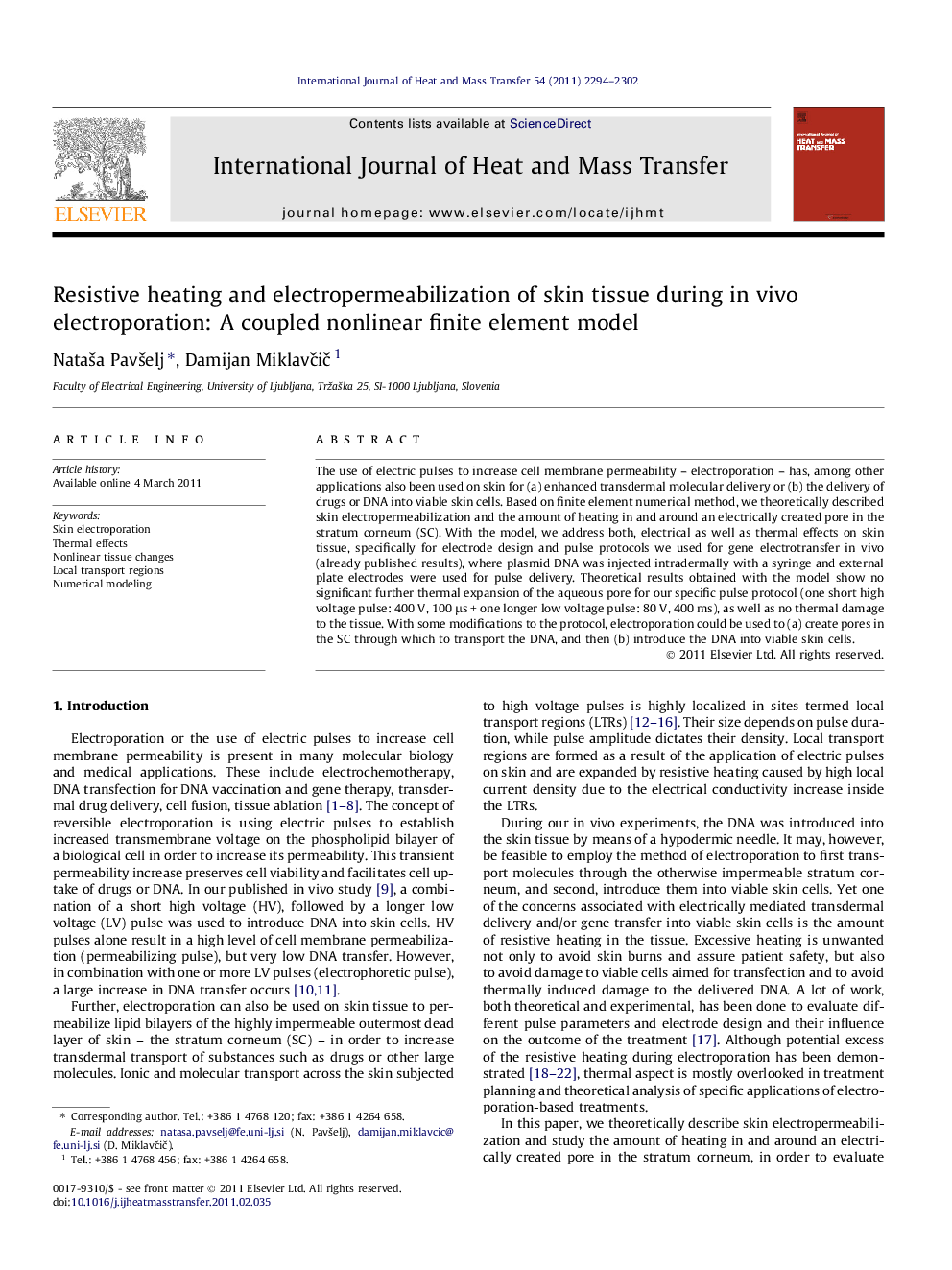| کد مقاله | کد نشریه | سال انتشار | مقاله انگلیسی | نسخه تمام متن |
|---|---|---|---|---|
| 659518 | 1458108 | 2011 | 9 صفحه PDF | دانلود رایگان |
عنوان انگلیسی مقاله ISI
Resistive heating and electropermeabilization of skin tissue during in vivo electroporation: A coupled nonlinear finite element model
دانلود مقاله + سفارش ترجمه
دانلود مقاله ISI انگلیسی
رایگان برای ایرانیان
کلمات کلیدی
موضوعات مرتبط
مهندسی و علوم پایه
مهندسی شیمی
جریان سیال و فرایندهای انتقال
پیش نمایش صفحه اول مقاله

چکیده انگلیسی
The use of electric pulses to increase cell membrane permeability - electroporation - has, among other applications also been used on skin for (a) enhanced transdermal molecular delivery or (b) the delivery of drugs or DNA into viable skin cells. Based on finite element numerical method, we theoretically described skin electropermeabilization and the amount of heating in and around an electrically created pore in the stratum corneum (SC). With the model, we address both, electrical as well as thermal effects on skin tissue, specifically for electrode design and pulse protocols we used for gene electrotransfer in vivo (already published results), where plasmid DNA was injected intradermally with a syringe and external plate electrodes were used for pulse delivery. Theoretical results obtained with the model show no significant further thermal expansion of the aqueous pore for our specific pulse protocol (one short high voltage pulse: 400 V, 100 μs + one longer low voltage pulse: 80 V, 400 ms), as well as no thermal damage to the tissue. With some modifications to the protocol, electroporation could be used to (a) create pores in the SC through which to transport the DNA, and then (b) introduce the DNA into viable skin cells.
ناشر
Database: Elsevier - ScienceDirect (ساینس دایرکت)
Journal: International Journal of Heat and Mass Transfer - Volume 54, Issues 11â12, May 2011, Pages 2294-2302
Journal: International Journal of Heat and Mass Transfer - Volume 54, Issues 11â12, May 2011, Pages 2294-2302
نویسندگان
NataÅ¡a PavÅ¡elj, Damijan MiklavÄiÄ,